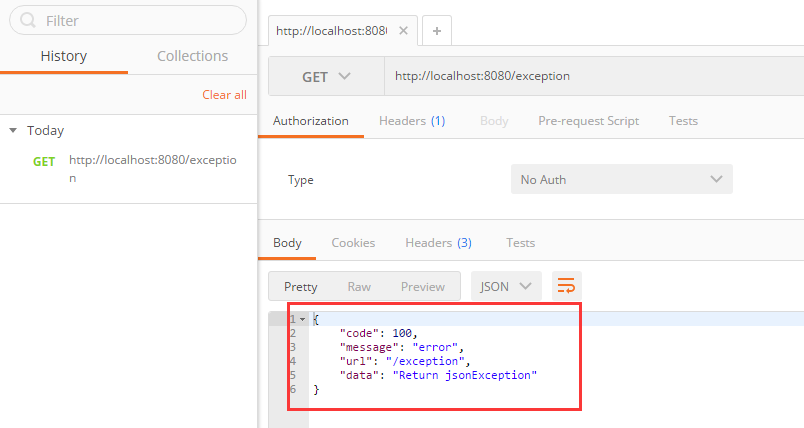SpringBoot统一异常处理
一:在实际开发中,当我们程序报错时,不是直接显示错误内容给用户,一般都会统一跳转到错误页面。定义一个异常方法,如下:
@RequestMapping("/exception")
public String exception() throws Exception{
throw new Exception("error");
}
显示结果如下:这是springboot提供的默认error映射页面。

二:统一异常处理(返回错误页面)
(1)创建全局异常处理类,如下:
package springboot.web; import javax.servlet.http.HttpServletRequest; import org.springframework.web.bind.annotation.ControllerAdvice; import org.springframework.web.bind.annotation.ExceptionHandler; import org.springframework.web.servlet.ModelAndView; @ControllerAdvice public class GlobalExceptionHandler { @ExceptionHandler(value = Exception.class) public ModelAndView defaultErrorHandler(HttpServletRequest req, Exception e){ ModelAndView modelAndView =new ModelAndView(); modelAndView.addObject("exception",e); modelAndView.addObject("url",req.getRequestURI()); modelAndView.setViewName("error"); return modelAndView; } }
使用@ControllerAdvice定义统一的异常处理类,@ExceptionHandler用来定义函数针对的异常类型,最后跳转到error.html。
三:统一异常处理(返回json格式)
(1)如果要返回json格式,只需要在@ExceptionHandler下新加一个@ResponseBody注解即可,如下:
//统一返回json错误信息 @ExceptionHandler(value = Exception.class) @ResponseBody public ErrorInfo<String> jsonErrorHandler(HttpServletRequest req, Exception e){ ErrorInfo<String> r = new ErrorInfo<String>(); r.setMessage(e.getMessage()); r.setCode(ErrorInfo.ERROR); r.setData("Return jsonException"); r.setUrl(req.getRequestURI()); return r; }
(2)创建统一的Json返回对象,如下:
public class ErrorInfo <T>{ public static final Integer OK =0; public static final Integer ERROR=100; private Integer code; //消息类型 private String message;//消息内容 private String url;//请求的url private T data;//请求返回的数据 public Integer getCode() { return code; } public void setCode(Integer code) { this.code = code; } public String getMessage() { return message; } public void setMessage(String message) { this.message = message; } public String getUrl() { return url; } public void setUrl(String url) { this.url = url; } public T getData() { return data; } public void setData(T data) { this.data = data; } }
(3)启动postman,调用方法,返回如下:




